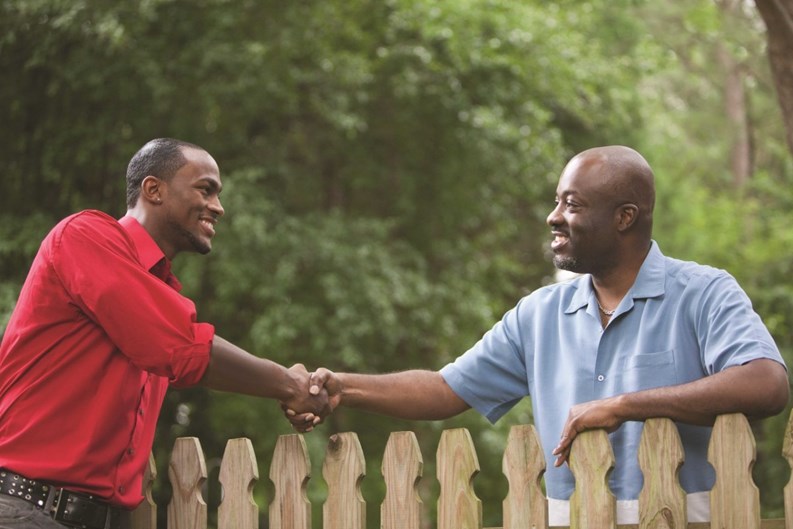New Jersey, the 11th largest state in America, seamlessly blends the quiet tranquility of upscale suburbia with the fast-paced lifestyles of urban, multicultural hubs. With the vast, booming metropolitan areas of Philadelphia and New York City right at its doorsteps—and a few urban areas of its own—the state thrives on the diversity and varied backgrounds of its estimated 9 million residents (despite limited square miles, ranking it the nation’s fourth smallest in size) and countless neighborhoods...many of those neighborhoods with personalities as distinct as those of its residents.
Nestled between the Northeastern and Middle Atlantic regions of the United States, New Jersey is within an overnights reach of nearly one third of all the United States (and many Canadians). Such accessibility enables many oceanfront vacation areas like Jersey Shore resort towns and Atlantic City, as well as other natural and cultural attractions, all of which contribute to the attraction of an estimated 80 million tourist. What problems could possibly plague resident’s with so many fortunate state perks?
Actually, one comes to mind, specifically. While many residents may enjoy the paradoxical privacy metropolitan living that areas like Newark, Hoboken, Jersey City, Paterson, and Atlantic City provides, others may crave a sense of belonging and more of a feeling of a community.
The word “community,” like many words in the English language, has more than one interpretation. A community may be identified as a geographical location—a physical infrastructure of streets, parks and buildings, defined by tangible brick and mortar structures—but a sense of community is often emotional, intangible, and much more difficult to define; it is what makes an address a home, and not just a street location.
The concept of high-rise living—people on top of each other—or across a privacy fence in condo living, doesn’t automatically equate to a sense of community; in fact, the close proximity sometimes has opposite effect. The reality is, residents with hectic schedules and thriving careers, or those who are continuing their education and/or raising children, often have minimal time or interest in socializing with neighbors.
If a sense of community has value—both real and perceived—what is the best way to achieve this network of support and communication? What steps should an HOA take to foster this intangible benefit? What, if any role, should property managers play in building community awareness? What can busy residents contribute to improving the quality of life in the place they call home?
Benefits of Community Living
Audrey Davis-Stok, lifestyle director for Del Webb, a company that specializes in active, adult homeowner associations across the country, including properties in Farmingdale and Manchester Township, coordinates a wide variety of clubs, special interests groups, and seminars for Del Webb residents. Experts have seen positive results when committees are formed to identify and implement programs within the community. Del Webb is one of the nation’s leading builders and focuses on developing active adult 55-and-over communities.
“What makes us unique is that we are a Del Webb community, so we foster a concept of lifestyle programming,” says Davis-Stok. “We have charter clubs and those are clubs that are voluntarily run by residents. They provide an abundance of activities and events. We have an activities club and they do things like wine dinners, bus trips to museums and meet-and-greet parties. Plus we have daily activities like mahjong, bridge and people come in and out of the clubhouse all day to participate.”
Technical advances and the use of websites can help a property’s reputation. While a good reputation may not increase a property’s value, positive comments can increase desirability. Likewise, a bad reputation can have a negative impact on real and perceived property values and lead to high turnovers.
Jeffrey Stillman, CPA, is vice president for Stillman Management, located in Mamaroneck, New York. He coordinates the technology resources, software, and online communications systems for his firm and the properties it manages. Stillman feels the same technology that allows for better online communication is just one reason there is less face-to-face communication between human beings in general, including the residents of a condo or co-op community.
According to Stillman, the demographics of a property—coupled with a lack of common interest—is a barrier to building a strong sense of community. He says 20 percent of the people do 80 percent of the work in relation to community building and awareness, and notes the lack of residential involvement as a significant problem in the quest for developing a sense of community.
Furthermore, Stillman says safety and security are enhanced when residents are more aware of their neighbor’s routines and habits. “When a board is isolated, then the residents are isolated, and distrust grows,” he says. Communication and transparency are essential for any property looking to build trust. Also, Stillman recommends open board meetings, where all residents can attend, staying educated and informed. “Happy residents just don’t complain as much,” he states.
Of course, every property is different. A wise manager will work with individual boards and committees to determine what systems and activities will best serve a particular property. “Newsletters and websites are two good tools for communication,” continues Stillman. He recommends the online portal Buildinglink.com, which is an excellent resource to keep residents informed. Others are AtHomenet.com, AssociationComm, HOASpace.com and AssociationVoice. Several management companies also host their own portals for their communities.
“Perception is reality,” says Stillman. Portals like Buildinglink, he says, allow residents to check on work orders, repairs, and stay informed.
Some of the successful programs Stillman has seen implemented include pool parties, tag sales, bagel breakfasts, holiday events, and meet-and-great parties for new residents. One building has a community garden area, as well as space for individual gardens in front of each apartment. Another location hosted a 40th anniversary party when the building reached that milestone; one committee was able to get a wine company to sponsor a wine and cheese party, while a different group invited a published author for a presentation and book signing.
Stillman is particularly pleased to mention how one board hosted an employee appreciation party and invited the residents to meet staff members who provide the daily operation services necessary for running a building.
Likewise, there is a property in which members of a community security committee worked with law enforcement to develop an official neighborhood watch program. One less active—albeit very detailed—committee created a handbook as a reference tool for their building; the more residents involved, the more possibilities for building a true sense of community.
Identifying Barriers
The factors that contribute to a lack of community involvement are the same factors that keep people from voting and becoming involved in other community activities: lack of time, lack of interest, and feelings of no power or influence.
When properties increase community contact, usually tolerance is the result. Residents are more likely to overlook small issues, like occasional noise or strong cooking odors. It becomes easier to talk with other residents and exchange ideas; the atmosphere becomes friendlier. Often, trust grows along with tolerance.
“When people go about their own business and don’t want to get along or interact with their neighbors, what happens is everybody is always looking for something to pick on,” warns Thomas Chilenski, CMCA, the president of Cedarcrest Property Management in Fairfield.
“It’ll turn into ‘I don’t like the way they park their car,’ or ‘I don’t like the way they take care of their garbage’ or ‘they left their newspaper in the driveway.’ Whatever it is, every little problem is magnified and people go directly to their board or management company for some type of resolution. While we may have rules that could be applied in these situations, all that does is create ill-will because we have to be the bad guy and tell them that someone made a complaint about them…negativity spreads quickly.”
Furthermore, sparring neighbors can have an economic impact on the community as a whole. “When you think about it, every unit owner is basically a shareholder in the association or corporation,” says Chilenski. “When people aren’t involved and don’t care, they might be inclined to not pay their dues on time…or at all. When you are friends, and you like your community, you are going to have a responsibility towards it. You are going to maintain your property better and you are going to pay your bills on time.”
Clearly one size does not fit all, though. Committees need to allow residents to find an area of common interest, and board members and managers should work together to cultivate closer ties between residents.
“My office has an open door policy. I have people coming in here every day giving me ideas,” says Davis-Stok. “We have people living here who come from various backgrounds; we have people who worked in technology and education. It brings so much to the table, and it creates a variety. What happens is that people will come to me and say ‘why don’t we offer this here?’ and I think what is the level of interest and is there a charter club in existence that should manage that?”
Anne Childers is a freelance writer and a frequent contributor to the New Jersey Cooperator. Staff writer Christy Smith-Sloman contributed to this article.







Leave a Comment